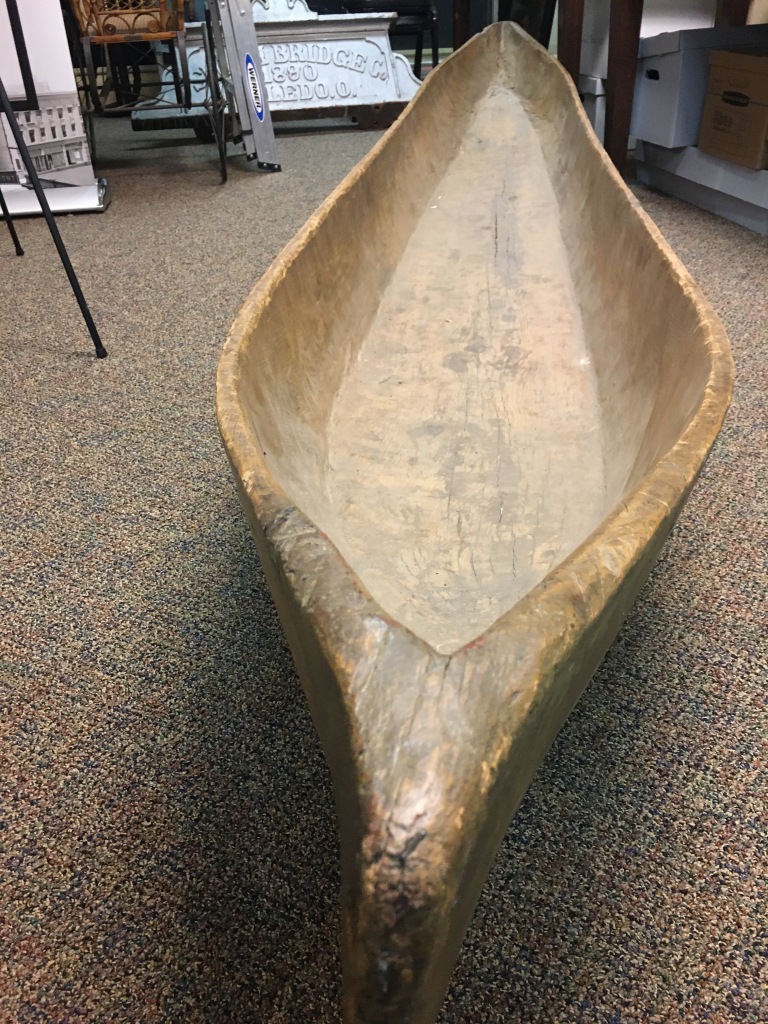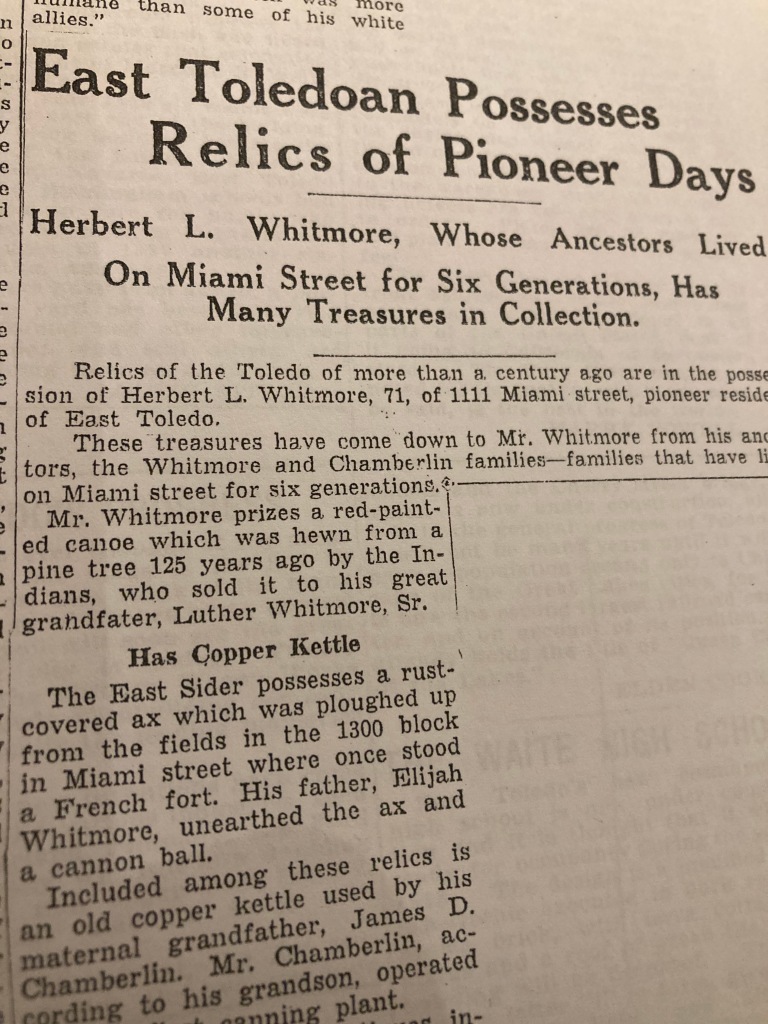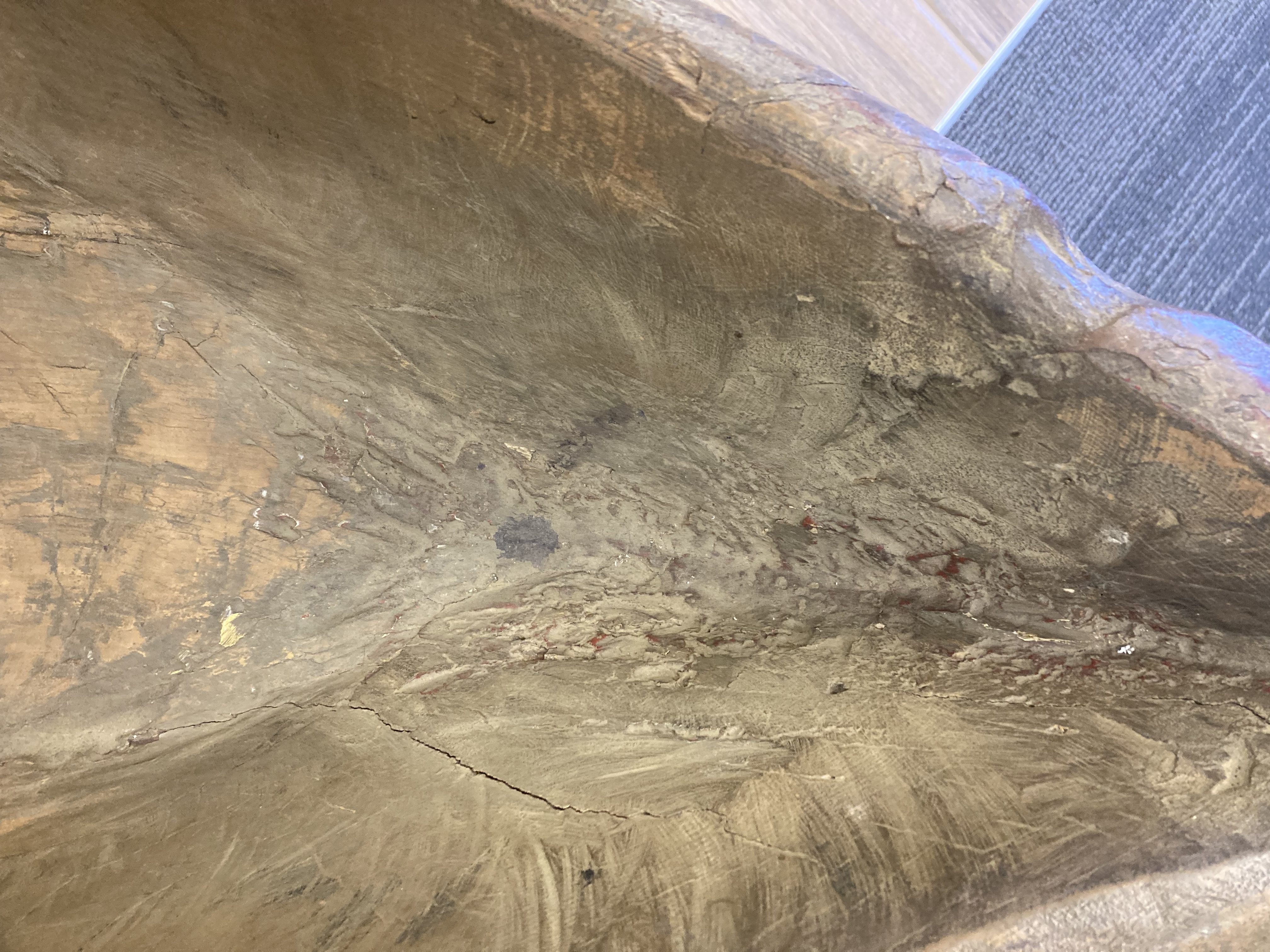The story of the black man’s entry into the ranks of American law enforcement really didn’t begin to materialize until little over a century ago in about the late 1800’s and the early 1900’s. Even then, the numbers of black Americans given the chance to wear a badge were still few and occurring mostly in the larger cities where black populations were large. In Toledo, for example, Albert King was the first black citizen hired to wear a Toledo Police badge in about 1900. In the smaller communities of the area, minority police officers were non existant at the time, and in many rural towns, they still are.

Young Benjamin Stone
So it was surprising to learn that the first black man in Ohio to become a small town police chief was a man by the name of Ben Stone, in the tinyWood County village of Luckey Ohio – in the 1920’s. He was born in 1874, Benjamin Franklin Stone, of mixed Irish and Black parents, and was considered “mulatto”, at the time. While history doesn’t record exactly where he was born, we do know that he and his brother, Tom Stone, eventually ended up in an orphanage on Lagrange Street in Toledo,. By the time he was 10 years old, Ben and his brother, Tom were taken from the orphanage by Bill Dunipace, an early farmer near Luckey who needed help on his farm. Dunipace was a bachelor and gave the brothers the promise of a better life in exchange for doing the various chores and jobs around the farm. Apparently, Tom Stone didn’t take to the notion of being a part of the farm life and fled back to Toledo, while Ben stayed on to work with farmer Dunipace and lived out his childhood in this rural setting of the late 1800’s. It is said, that their relationship grew close and became like a father and son. Two decades later when Mr. Dunipace died, he left Ben 80 acres of land and a house on Sugar Ridge Road. For a number of years, Ben tried his hand at farming and living the rural lifestyle, but as a young man, at about 30 years old, he wasn’t content to just settle down and work the land. He had other pursuits on his mind and one of them was guns. Throughout his boyhood, he enjoyed shooting guns and spent much of his time while growing up…honing his skills as a marksman. Locals say he became so good with a revolver, he could shoot the eye out of a crow perched in the highest branch of a tree. And one neighbor says he actually saw Ben shoot at and hit the same nailhead on a wooden door, four times in a row. He also enjoyed other thrills like speed and motorcycles. Not only did he have a motorcycle, but kept it parked at night inside of his modest house on the farm property where he lived. Stories are still told of how Ben would blaze at high speeds down the back country roads of Webster Township on his motorcycle, “plinking” at prearranged roadside targets with great accuracy
BEN STONE MAKES HIS HIS MOVE INTO TOWN.

Ben Stone’s Cabin
Eventually, in 1916, Ben tired of the farming life and sold off 40 acres of his land to a neighbor, but kept the old cabin and the other forty acres where he lived. He also took a few odd jobs working for other farmers in the area. His solid reputation for hard work and honesty paid other dividends when he took a full time job as the night watchman for the Schwan Furniture store and funeral home in Luckey, guarding the business from the growing number of depression era criminals who roamed the area looking for things to steal. A few other merchants also paid Ben to watch their stores at night and soon he was officially appointed as the town marshal. With that designation he was allowed to carry and gun and he patrolled Luckey’s streets at night with a flashlight in one hand and a shotgun in the other. He also tucked a .45 caliber handgun into the side of his well worn and shaggy coveralls that was his familiar uniform. It can be stated that Ben was hardly a student of modern fashion. His unshaven and grizzly face and his disheveled appearance, were not helped by his refusal to wear a glass eye after he had lost one in an accident many years before. His reason for not wearing the glass eye, he said, was that “it doesn’t make me see any better”. Ben was clearly a man of modest needs and means. After selling his cabin and the remaining 40 acres in the country, he eventually made his home in the back storeroom of the old Schwan Furniture store and where his bed was fashioned from empty wooden boxes used for burial vaults.
THE DAY THAT BEN BECAME A LUCKEY LEGEND
Locals say Ben would have made a good character for a movie. And if ever there was a great opening scene, it might have been written about the quiet autumn day in 1933 when this mild mannered and friendly marshal became a real-life action hero. As the tale is told from the 1981 Luckey Centennial history book, the story unfoldedThursday afternoon, September 28 in 1933. John Landwehr who worked at the Schwan furniture store, was washing the front windows when he noticed a man walk toward the Luckey Exchange Bank wearing a hunting coat. Another man was sitting in a parked car, acting nervously, on the street nearby. Sensing something wasn’t right, Landwehr and his sister ran to the backroom of the furniture store to awaken Marshal Stone who had been up all night patrolling the streets. When informed of what might be happening at the bank, Ben promptly rolled out of bed, put a six shooter in each pocket, and picked up a double barreled shotgun loaded with buckshot.
“He went out the back door of Schwans down the alley and through The Williamson’s Garage and when went down the sidewalk past the bank and waited in the stairway beside the barber shop.” Meanwhile the bandit had entered the bank and pointed a pistol at Harvey Helm, the cashier and two others in the bank, and demanded the money in the drawer. As Helm passed $344.98 to the bandit, he touched an alarm button that sounded in the telephone office and several other downtown stores. Then he and others were herded into a back room of the bank by the bandit who fled out the front door. As he exited, he was greeted by the shotgun wielding Marshal Ben Stonewho said “Stop or I’ll shoot!”
That’s when Ben Stone says he heard “two cracks” from the robber’s gun and then felt something “nip” his legs” and “That’s when I let him have the right barrel and he went down in a heap.” Someone then shouted that the robber was going to fire again, at which point, Ben not only fired the other barrel at the robber, but then pumped three more bullets into him from his pistol. As soon as the gunfire erupted, the other man in the getaway car took off and Ben would recall later” I’m pretty sorry I didnt get him too.” He was later caught and sent to prison.
LOCAL WOMAN STILL RECALLS THE DAY IT HAPPENED
By this time, the normally quiet downtown main street in Luckey was flooding with people who came to view the aftermath of this violent bank robbery that ended badly for the suspect as he lay mortally wounded bleeding profusely from his wounds, while Marshal Stone dealt with the pain and bleeding from two bullet holes in his legs. One of the people who came to town that day to witness the scene, was LaVeda Graening, who was a teenager at the time. Now in her nineties, and living in Perrysburg, she told me recently, what she remembers of that day as the crowd gathered around the dead bank robber sprawled out on the bloody street.
” My cousin called me and told me what was happening and I ran as fast as I could to get there. The streets were filled with people and people gathered around to see someone shot in the street. It was so public…seeing a body there. Just out in front of everybody. I don’t want to be too descriptive, but when they took his short off, you know, you could see the wound in his chest. It was awful”.
Ben Stone who had suffered two gunshot wounds to the legs was being transported by a local resident to Mercy Hospital in Toledo. Mrs. Graening remembers that townspeople were concerned for Ben and sent get well cards to the wounded Marshal in hopes for his quick recovery. “Everybody liked Ben. He was a friendly man. I can still remember seeing that little smile of his. He used to have little sayings and called some of the girls and women in town his little “Ain-gies”, or Angels. He loved children….he was like a Granpa to me.”
STONE ADOPTS LUCKEY AS HIS HOME AND LUCKEY ADOPT S HIM AS ONE OF THEIR OWN
Laveda Graening’s remembrances of the Luckey’s most famous lawman are shared by many. The legacy of this man remains indelibly etched into the historical accounts of the Wood County community as a local hero. An unlikely and unusual embrace of a black man in the lily-white farm country of Wood County made up predominantly German and Swiss ancestry at a time when racial prejudice was still practiced openly in many communities. The open warmth that was shown to Ben during this era says a lot about the people of Luckey and says a lot about character of Ben Stone and the effect he had on the people of the community.
“He was my Dad’s best friend”, LaVeda Graening recalls, and she tells of how Ben’s “bunkhouse” or quarters, where he used to sleep at night in the back of the mortuary, often became a social gathering place for the men of the town who would get together on a Saturday morning to tell stories over a pot bellied stove. Ben, who was regarded as “town character” often took his share of good natured ribbing from some of the men in town about his dress, his bib overhauls and and his happy-go-lucky lifestyle, but Ben, it is written, always took it in good stride and laughed with those who make the jokes. After the bank robbery and shooting in 1933, the townspeople of Luckey took Ben a little more seriously. Appreciative of the fact, that he had put himself in harms way to protect the town and residents, the citizens found a new sense of respect for Marshal Stone. In November of 1933, few months after the shooting, Ben Stone was the guest of honor at a testimonial dinner at the Grace Lutheran Church in Luckey where 160 of his fellow townspeople thanked him for his courage and service to the town and presented him with a new gold deputy sheriff’s badge with his name engraved on the back of it. They also presented him with a check for 150 dollars.
SLAIN BANK ROBBER’S MOTHER THANKS BEN STONE
Another gift Ben received was surprising and offered a strange twist to the bank robbery saga. It was a letter of thanks from the mother of Glenn Saunders, the bank robber that he had shot dead. Mrs. Saunders of Columbus Grove, thanked Ben for killing her son, saying he had always been trouble and she and her husband were relieved that he wouldn’t be causing anymore trouble. She continued her communication with Ben over the years and they often exchanged Christmas gifts.
Ben continued his duties for the next decade in his adopted home of Luckey, patrolling the streets, with his guns tucked into the bib overhauls and greeting his friends and residents everyday with a familiar smile. After the shooting however, he had to give up riding his bicycle because of the wounds he sustained in the shoot-out. He sold it a young girl in town, Betty Landwehr, who had become one of his “Ain-gies” or Angels. Her mother paid for the bike with10 dozen cookies, delivered over a period of time. Betty rode the bike for many years before heading off to Bowling Green to college. Betty lives now in Florida and has very fond memories of Ben Stone as do most of those fortunate enough to have known him.

Ben Stone’s Marker
When Ben died on August 27th, 1943, of heart disease, at the age of 69, staying true to his simple desires of life, his remains were cremated, and his ashes spread over the Webster Township Cemetery at Scotch Ridge. Today one can find a grave marker among the those of the other families and settlers of the area. And while the old dirty boots of Ben Stone no longer walk the streets of Luckey protecting its citizens at night, the footsteps of this young orphaned boy who found a home can be heard in the winds of time.










